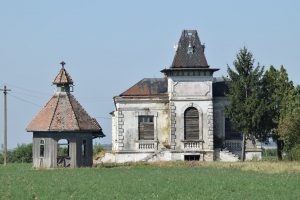

The Statue of the Dorobanț Soldier is executed by Italian sculptor Raffaello Romanelli, in 1907, to honor the heroism of the dorobanti soldiers in the 1877-1878 Independence war. The monument depicts a soldier with his hat tilted; on the monument’s base there are two bas-reliefs, displaying battle scenes and an open wings vulture carrying a „charter” with the heros’ names and on both sides there are two Turkish cannons, captured by the Romanian soldiers in Plevna.
The statue was raised in the memory of corporal Tudorică Nicolae, fallen heroically in this war’s battles, the monument’s soldier carrying the popular name „La Tudorică Dorobanțu’”.
The town of Turnu Magurele was founded in 1836, by the edict of the king of Wallachia Alexandru Ghica (1834-1842). Later, in 1860, it became an important custom point and commercial center, at the Danube crossing, for the merchandise coming in and out of Wallachia.
It was one of the strong revolutionary centers in 1848. In 1859, the Unification of the Romanian Principalities causes great enthusiasm here and as a sign of their appreciation the people of Turnu Măgurele offers Al.I.Cuza as a gift an engraved sword, today in the National History Museum in Bucharest.
During the Independence war (1877-1878) here weapons and fodder were deposited, hospitals were set up, Turnu Măgurele being one of the support points of military operations. On the ship bridge in Turnu Măgurele-Nicopole aliments and front ammunition was transported, hoards of prisoners and wounded were sent to the country, the Romanian troops returned after the victory on the Turkish army.
The Independence war (1877-1878) marked, through its very happening, a superior stage in the independence and state unity. Teleorman county was during The Independence war, the crossing point for most of the Russian troops across the Danube, the empire army’s itenerary towards the Danube being: Bucharest, Drăgănești de Vlasca, Vitănești, Cernețu, Storobăneasa, Beiu, Smardioasa, Zimnicea, Svistov, and another part of the army went through Alexandria, Furculești, Dracea, Turnu Măgurele


